Lizzie Eldridge's Blog: Lorca by Candlelight, page 8
May 31, 2016
Please support this Duende ‘thunderclap’ campaign
https://www.thunderclap.it/projects/42645-duende-is-the-true-struggle
If you click on this link, then click on the FB/Twitter/Tumbir button, you kindly add your support to a sort of ‘flash mob’ joint message on 14th June 2016. The message? THE TRUE STRUGGLE IS WITH THE DUENDE (Federico García Lorca)
Thank you Thank you Thank you
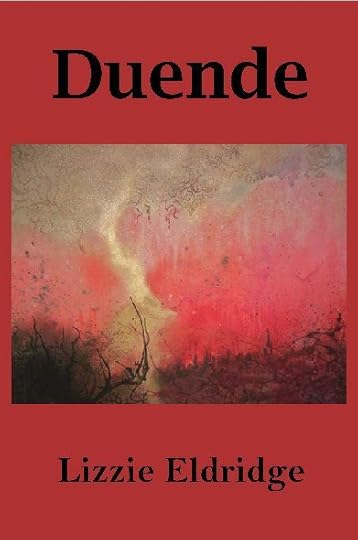


May 14, 2016
Duende: a novel about art, philosophy and love
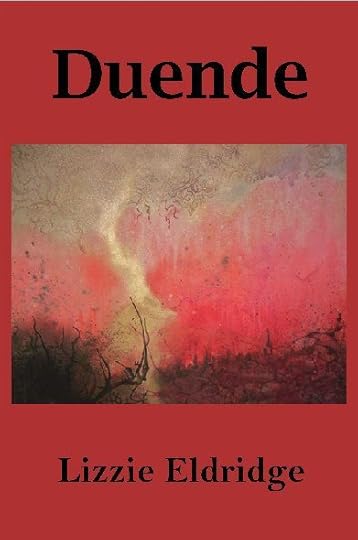
Duende by Lizzie Eldridge
‘The true struggle is with the Duende.‘ Federico García Lorca
Ignacio Ramirez Rivera quickly became Nayo thanks to his older sister who deliberately simplified his name in response to his arrival in her world. Although this diminutive form was unusual, soon Nayo’s parents were fondly referring to their baby in this way, pleased a bond had already developed between their two young children. Angelita, the little girl responsible for her brother’s title, herself had a name with a lot to live up to.
Duende, a novel set in Spain in the period leading up to the Spanish Civil War, begins in 1900 with the birth of Nayo in Barcelona. In 1914, he falls in love with a boy called José who becomes his life-long partner at a time when homosexuality was outlawed. The illicit nature of their relationship becomes a means of exploring the nature of love per se and how it is possible to co-exist in a hostile environment.
The Spain in which the two men live and breathe is deeply antagonistic, riven by religious, political and social tensions. In contrast, and reflecting wider European trends, Spain was also characterised by a vibrant artistic and cultural scene, and Dalí, Ortega y Gasset and, most significantly, Federico García Lorca are real-life figures who appear as characters within this book. 
Federico García Lorca (1898-1936) was a homosexual writer and poet murdered by fascists at the start of the Spanish Civil War. He becomes a friend to the two main characters in my novel as their professional and personal interests coincide. Nayo is an artist and José a philosopher, and thus art, philosophy and literature become overarching themes.
However, they become more than simply themes as they permeate every single aspect of the story, being integral to plot, structure as well as characterisation. In conjunction with the tumultuous landscape in which the action occurs, these elements form the momentum and impulse driving the narrative forward. And these elements combine in the title of the novel which, deriving from Spanish folklore and mythology, defies any adequate translation into English. Here’s some descriptions taken from the novel itself:
‘Duende. Something primal, living, shuddering and vibrant. Duende which evokes tears through its music and its poetry. Duende which comes from the depths of the body through the roots of the earth and shakes the entire universe. The aspiration to perfection is a struggle with the duende and José thought of Nietzsche’s concept of the Ubermensch as the ongoing quest to overcome the limitations of the self. Like Nietzsche’s Will to Power, duende encompasses the the death wish as the duende swoons and dances in its arms.’
‘Duende, which only appears when there’s the possibility of death. Duende. That most vital struggle, when touching death is knowing, and truly knowing, life. The fucking wrenching ache, the agony of living, loving, dying at the same time.’
‘José thought of Federico’s premise that all that has dark sounds has duende and knew from his own experience that art, in each and every medium, stemmed from the need to express not only the inexpressible but those emotions which cut so deep that in the act of articulation, the artist writhes in pain. Release has its aftermath in resolution or destruction or, perhaps, in both.’
In the context of 1930s Spain, resolution of longstanding conflicts came through destruction in the form of the Spanish Civil War.
My own story, which chronicles the lives of two men in their ongoing journey to make sense of their experiences, comes to an end as the civil war begins. For me, as the author, this was a momentous journey as I, too, struggled to comprehend the seemingly irreversible sequence of events that resulted in such widespread and barbaric devastation. However, in the process of writing Duende, I became intensely aware that it was the forces of love that propelled the narrative forward. It was the forces of resistance to increasing brutality. It was the voices of humanity which allowed me to keep writing even when all hope seemed irrevocably lost.
The fact that the precise love at the heart of my story was of itself a form of resistance to prevailing morality served to reinforce its humanity and its universal implications. At this point, it’s pertinent to let the characters speak for themselves:
‘It’s always been about connecting thought and feeling,’ said José. ‘For me, that’s what it’s always been about. And at its finest, philosophy does this. At its best, philosophy becomes poetry and vice versa. Take Nietzsche, for example. When we were talking tonight, a phrase from Nietzsche kept going round and round in my head. I know he’s Rubén’s favourite so maybe that triggered it but I couldn’t get the words out of my mind. Nietzsche said that whatever’s done for love always occurs beyond good and evil. Whatever’s done for love transcends these fundamental dichotomies.’
‘What Nietzsche’s referring to,’ said Nayo, ‘me and you have found that place so many times. We’ve been there and back again. Forget politics. Forget philosophy. We’ve stood there, we’ve tasted it and we know what it feels like.’
José looked at Nayo and nodded.
‘But we also know the ground we walk on can shift,’ he said. ‘For us, it has to. Many times, we’ve been forced to put up barriers in order to defend the very territory we wanted to sustain. That’s how it’s been and that’s how it is. We’ve inhabited a space that’s never been permanent. It can’t be. Because it’s simply not allowed.’
‘But the fact is that we’ve found it,’ persisted Nayo. ‘Even when its truth can only be revealed when we’re as certain as we can be that no threats can interfere, the fact we know of its existence, that we’ve lived and breathed within this is what matters. The fact we’ve been there and can go back there any time we need to, that’s what counts.’
Duende by Lizzie Eldridge: Available on Amazon
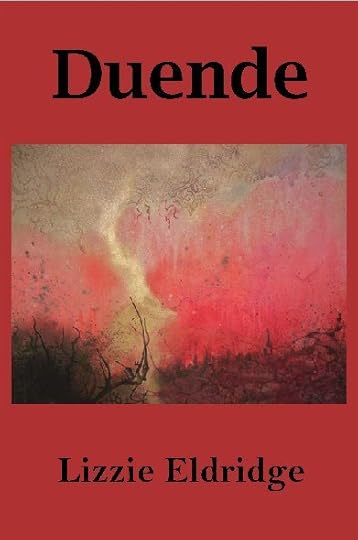


April 30, 2016
Duende by Lizzie Eldridge: A Reflection by Giuliana Fenech
Duende by Lizzie Eldridge
A Reflection by Giuliana Fenech
Book Launch of Duende: 23rd April 2015 National Museum of Fine Arts Valletta
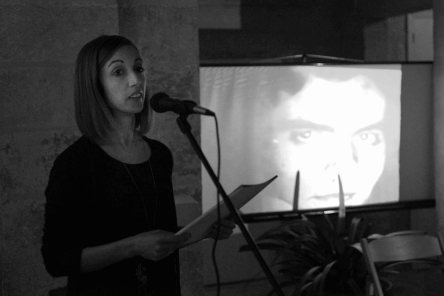 Duende is about the darkness that haunts every creative soul. It is about the negotiation between illusion and delusion. It is also about art and life and the ways in which human beings negotiate the two on a quest to understand more about each. In Lizzie Eldridge’s Duende it is also about art as one way in which humans compose themselves in encounters with other bodies and materials to produce a more powerful body by asking the question, ‘What if?’
Duende is about the darkness that haunts every creative soul. It is about the negotiation between illusion and delusion. It is also about art and life and the ways in which human beings negotiate the two on a quest to understand more about each. In Lizzie Eldridge’s Duende it is also about art as one way in which humans compose themselves in encounters with other bodies and materials to produce a more powerful body by asking the question, ‘What if?’
What if our thoughts are nothing but ephemeral, flighty and meaningless? What if men are all brutes and politicians all corrupt? What if a man loving another man is tempting fate too much and will lead to doom for both? But what if art could teach the lessons of history so that no more people would die in war? What if poetry could capture the depths of consciousness so that those who are lost could find themselves again? What if the emotional connection of love could overcome shame, grief and desolation?
if Paradise was ever lost completely
if light grew dead
and darkness embraced my mind
if the curve of your body
became a shadow
and the sky collapsed within the sea
I, sleepless, would forever search for you
the truth I seek,
desire, delight and dreams
the honesty of angels
whose wings unfurl to the pulse of our existence
windows watching strangers
lighting shipwrecked passers-by
church bells
toll against a weary world
spinning ceaselessly around
if the shoe fits
chains may break
and blindness turn to sight
the sea baptised us
the water and the wind
gave us a name
a sheltered cove
was our creation
our beginning
and our end
wine and stars
white moon and snow
sharp russet rose
perhaps no home
or country
but still a memory
a whispered touch
a long held sigh
you are all i want
all i could need
it’s you I find
infinite and dancing
in the pathways of my soul
(Eldridge, 2015)
In this novel, art becomes a driving force for a lifetime of change and creativity but also a platform for contemplation and action. Loosely interpreted Duende means – having soul – or being in a heightened state of emotion, expression and authenticity. In this novel, Duende remains faithful to its broader meaning whilst honing in on a particular time and place. Set in the years leading up to the Spanish Civil War, it cleverly combines an attention to detail and history that keeps us grounded in life whilst also allowing us to follow the journey of the two protagonists, Nayo and José. The growing love between two boys who mature into men as the story progresses is only rendered even more intriguing by the fact that one, Nayo, is an artist and the other, José, a philosopher and poet.
Their story unfolds in the magical and mysterious cities of Europe including Madrid, Barcelona, Paris and others as they are surrounded by those we now recognise as icons; Salvador Dalí, Pepin Bello, Pablo Picasso, Luis Buñuel, Federico García Lorca. Through these characters we ‘perform what we read in the theatre of our minds’ (Gerrig, 1993). We engage in aesthetic illusion as we would in a game of make-believe. We know that this is only a story – an illusion – so that we are in-lusio, meaning in play and yet we are also immersed. Amidst the turmoil and changes that the boys experience, whilst eager to absorb all that they can from the world and people around them, they form a strong connection that carries them through the rest of their lives. ‘I’ve found you, Nayo, I’ve fucking found you’, José exhorts as he catches sight of his friend after having lost him in the crowd.
Nayo is not simply José’s companion but also his soul mate. Lizzie has chosen her title carefully, not only are their emotions constantly pushed to dizzying heights and desperate lows, but their quest for expression and authenticity constantly challenged creatively. Their art embodies the spirit of evocation. It comes from inside recalling a physical/emotional response to life. It represents what gives you chills, makes you smile or cry as a bodily reaction to an artistic performance that is particularly expressive. Lizzie, drawing on Federico García Lorca’s own reflections on Duende, writes:
Duende. Mysterious and inexplicable like Goethe’s notion of the Demonic. Duende, that mischievous spirit in myth and folklore. Duende. Something primal, living, shuddering and vibrant. Duende which evokes tears through its music and its poetry. Duende which comes from the depths of the body through the roots of the earth and shakes the entire universe.
(Eldridge, 2015)
And we, as readers, are reminded, that whilst this may be just a story it is also a journey, the journey of a character who falls in love, an artist who discovers his talent, a country that fights for ideals it believes in and a reader, who curious to know more ventures to ask, ‘What if?’


April 26, 2016
Earth Day: Celebrate the Spirit of the Earth Within
Michelle Adam and her beautiful and pertinent description of duende…
AMIDST CHANGE AND UPHEAVAL, AWAKEN DUENDE!
Dear Readers…I am taking a break from my regular blog to share parts of my recently published novel, Child of Duende, and to write about the spirit of DUENDE. May it inspire you!
As birds court the earth with their love songs, and we renew our vows of change and new life with the earth, I wish to share a special word and spirit with you: duende. It seems so many people are talking about immense change, upheaval, and confusion in their lives. Yet, maybe, this simple, yet powerful word, duende, can give insight into what’s happening, and inspire us to truly see what’s possible in our lives.
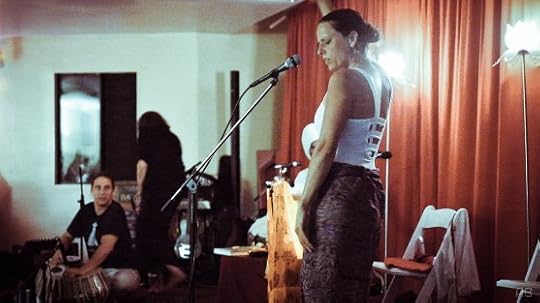 Dancing and Singing in Honor of Duende, 2014
Dancing and Singing in Honor of Duende, 2014
The famous Spanish poet, Federico García Lorca, once said that duende is “the spirit of the earth” that one must awaken in the remotest mansions of…
View original post 470 more words


Here’s what came out of #GatheringIntel
This Saturday, the Creative Writers’ Alliance Malta held its first session of Gathering Intel, a public consultation which aims to spark discussion about the challenges facing the creative wr…
Source: Here’s what came out of #GatheringIntel


April 24, 2016
April 7, 2016
The Precipice of Non-Existence: A reflection about Duende, a novel by Lizzie Eldridge [Mario Gerada]
The Precipice of Non-Existence By Mario Gerada 23 April 2015 The struggle for life, with death and darkness emerge as powerful themes, both in Duende as a concept, and in Lizzie Eldridge’s novel. D…
Source: The Precipice of Non-Existence: A reflection about Duende, a novel by Lizzie Eldridge [Mario Gerada]


February 7, 2016
Vandalism
Vandalism is a novel I began writing many years ago but it continued to follow me around through different countries and various stages in my life. The book is set in my home city, Glasgow, and tells the story of Moira, a young woman whose best friend, Connie, is dying of breast cancer when Ewan, a man from her past, reappears in her life. Although Moira is in a settled relationship with Andy, she begins an affair with Ewan, one which contrasts sharply with her routine life with Andy and, much more brutally, with the rapid deterioration in Connie’s health.
In 2013, I returned to this novel and, in the intense heat of a Maltese summer, I returned to the grey and rain of Glasgow which was the setting for my book. At the beginning of 2014, I submitted a couple of chapters to the main publisher in Malta, Merlin Publishers, Malta having then been my home for 6 years. To my surprise, given the novel’s set in Scotland, the publisher asked to see more of the work, quickly requesting the complete manuscript and, in April of that year, Merlin wrote to say they wanted to publish the book. To say I was delighted is an understatement.
It appeared in the bookshops in Malta in October 2015. Since then I’ve had the privilege of receiving a lot of feedback from readers and just as I was taken aback by the fact a Maltese publisher was so keen to publish the novel, so, too, I’m deeply touched to find such a range of readers responding to the book: young and old, men and women, people of different nationalities and from different cultural backgrounds. As a writer, I couldn’t ask for more.
To include some examples:
‘WOW! What an amazing read! Started it yesterday morning and haven’t been able to put it down. It’s so intense! You very cleverly put into words so many emotions and thoughts which us lesser verbally-challenged mortals find so hard to describe.’ [Catherine Vassallo]
‘A truly touching, thoughtful wee gem and resonant contemplation on relationships and love.’ [Andrew Galea]
‘I just finished the book. I’m crying and laughing at the same time. It’s so melancholically real and you manage to capture every emotion so beautifully. I felt everything she went through, it’s beautiful, it is duende. You have it in bucketfuls.’ [Ann Sammut]
‘It is so lovely to experience a novel which celebrates the frailty of life and love without sugar-coating and sentimentality. The beauty of humanity is in the flaws, and Eldridge shares these imperfections with great skill, sensitivity and above all honesty.’ [Marie Keiser-Nielsen]
One intensely moving reaction came from a woman I was at school with. She spoke of how the book reminded her of the Glasgow she grew up in, and, more specifically, how it found her reflecting on the loss of her best friend, someone who was also a shared school friend and who tragically took her own life several years ago. This response is one that stays with me strongly, painfully and poignantly, and always will.
I think, at this early stage in the book’s wider life, I’m beginning to realise why this was a novel that never disappeared from my own mind. On the cover is a quote from the story and this seems to capture exactly what I mean:
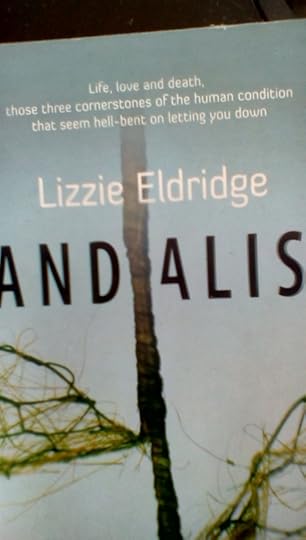
Life, love and death. Pretty much the fundamental basis of our shared human experience and of our expression of this through writing and every other art form. Life, love and death which, in themselves, don’t always make much sense but, perhaps, acquire a little more understanding through the sharing of these experiences. Life, love and death: the focus of our ongoing questions about what it means to be human in the face of the callously inhumane. Life, love and death, which in themselves hold no answers yet, in their diverse colours, shapes and textures, constitute the fabric of our collective existence.
The writing of Vandalism came from my own responses to particular situations, resulting in a story with fictional characters and a context of their own. Other people’s responses to the book have left me feeling extremely humble and immensely grateful that this specific story resonates with the individual lives of those who read this book. Through these responses, I’m discovering a deeper understanding, one intimately connected with those whose journeys intersect with mine. Thank you.


May 17, 2015
A Meditation on Reality
Days and Nights of Love and War by Eduardo Galeano
Eduardo Galeano’s book is a meditative journey through Latin America during the 1970s. The writing combines Galeano’s astute and terse journalistic accuracy as well as lyrical prose, and this also captures the overriding atmosphere of the book. It moves seamlessly between the personal and the wider and terrifying political landscape in which people are literally eliminated at the click of a finger: through murder, torture and ‘disappearance':
‘”he technique of the ‘disappeared': there are no prisoners to claim, no martyrs to mourn. The earth devours the people and the government washes its hands. There are no crimes to denounce nor explanations to give. Each death dies over and over again until, finally, the only thing your soul retains is a mist of horror and uncertainty.”
In an atmosphere of terror and the ever-present possibility of extinction, Galeano captures the minute details of the lives of the people who live and breathe within these days and nights of love and war. Always extraordinary because the context and the writing lifts anything remotely resembling the mundane far far above this.
The book interweaves the political realities with the experience of these realities, forever integrating the micro and macro, thus capturing the self-same and fluctuating nature of lived experience. It moves between a present and a past, resembling a meditative memory process in which connections are continually formed, like snapshots or fragments which are caught and linger on the breath, sometimes with pleasure and, more often, acute pain.
Days and Nights of Love and War is more than an historical document and more than a personal memoir. It is both and at the same time. With its vast scope and its intense humanity, it is a truly phenomenal piece of writing.


March 7, 2015
The Art of Duende Part I
One of the characters in my novel, Duende, is an artist called Ignacio Ramirez Rivera, better known as Nayo. The book begins with his birth in Barcelona on April 23rd 1900. In 1918, he moves to Madrid with his lover, José, to study at the Real Academia de Bellas Artes de San Fernando, an art school which was the starting point for both Picasso and Dalí (who appears as a character in Duende).
Art was one of the things which brought Nayo and José together as schoolboys, aged 14:
Thursday afternoons were always a blessing. Art was what he loved. The stillness of the classroom, the tranquility of trying to capture live objects on to paper, the beauty of being given permission for that which you are born to do. Although the still life the teacher had constructed was hardly inspirational, Nayo found a way to glean shapes, textures and colours. Even if it’s not right in front of your eyes, you can still find a way to trace the undiscovered correspondences, the true lines and natural curves, the light and the shade, and the moments of contact, the rise and inevitable fall. That afternoon, he became totally absorbed in his task. The rest of the world blurred into the background.
This time, it wasn’t a hand but a breath that interrupted his reverie. A soft, sweet sharp breath followed by a gasp.
‘How can you turn that into this?’ asked José. The fact he was impressed was undisguised.
Nayo felt a shyness overwhelm him but knew that in this moment, appearances were all.
He smiled at José as a modest means of accepting praise. He turned his body round a little further. Their eyes locked and Nayo felt himself swim.
‘If you look hard enough, you always find what you need,’ he said and realised that unknowingly, he’d said something profound.
Nayo’s words have an eerie resonance at the end of the novel but this is the start of his relationship with José, a love affair between two men in the run-up to the Spanish Civil War; a love affair between philosophy and art.

Lorca by Candlelight
Writing is an ebb and flow. Sometimes you arrive breathless and disbelieving on some safe but unknown shore. At other times, you stumble blindly, gasping for air and treading water, desperate for some solid ground beneath you... ...more
- Lizzie Eldridge's profile
- 18 followers






